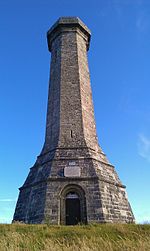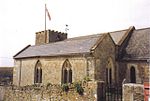The Hampton Down Stone Circle is a stone circle located near to the village of Portesham in the south-western English county of Dorset. Archaeologists believe that it was likely erected during the Bronze Age. The Hampton Down ring is part of a tradition of stone circle construction that spread throughout much of Britain, Ireland, and Brittany during the Late Neolithic and Early Bronze Age, over a period between 3,300 and 900 BCE. The purpose of such monuments is unknown, although archaeologists speculate that they were likely religious sites, with the stones perhaps having supernatural associations for those who built the circles. However, it has been suggested that the site is not a stone circle at all, but is instead made up of kerbstones from a Bronze Age round barrow.
A number of stone circles were built in the area around modern Dorset, typically being constructed from sarsen stone and being smaller than those found elsewhere. The Hampton Down ring was erected on an open downland ridge overlooking the coast. It originally contained either eight or nine sarsen stones and had a diameter of 20 feet (6.5 metres) across with a track leading to it from the north. By 1908 the circle had been shifted east of its original position, with a hedge built across the site, and the number of stones increased to sixteen. By 1964 the number of stones had further increased to twenty-eight. In 1965, Geoffrey J. Wainwright oversaw an archaeological excavation which revealed the circle's original location and dimensions, after which it was reconstructed in its original location with the extraneous stones removed.










